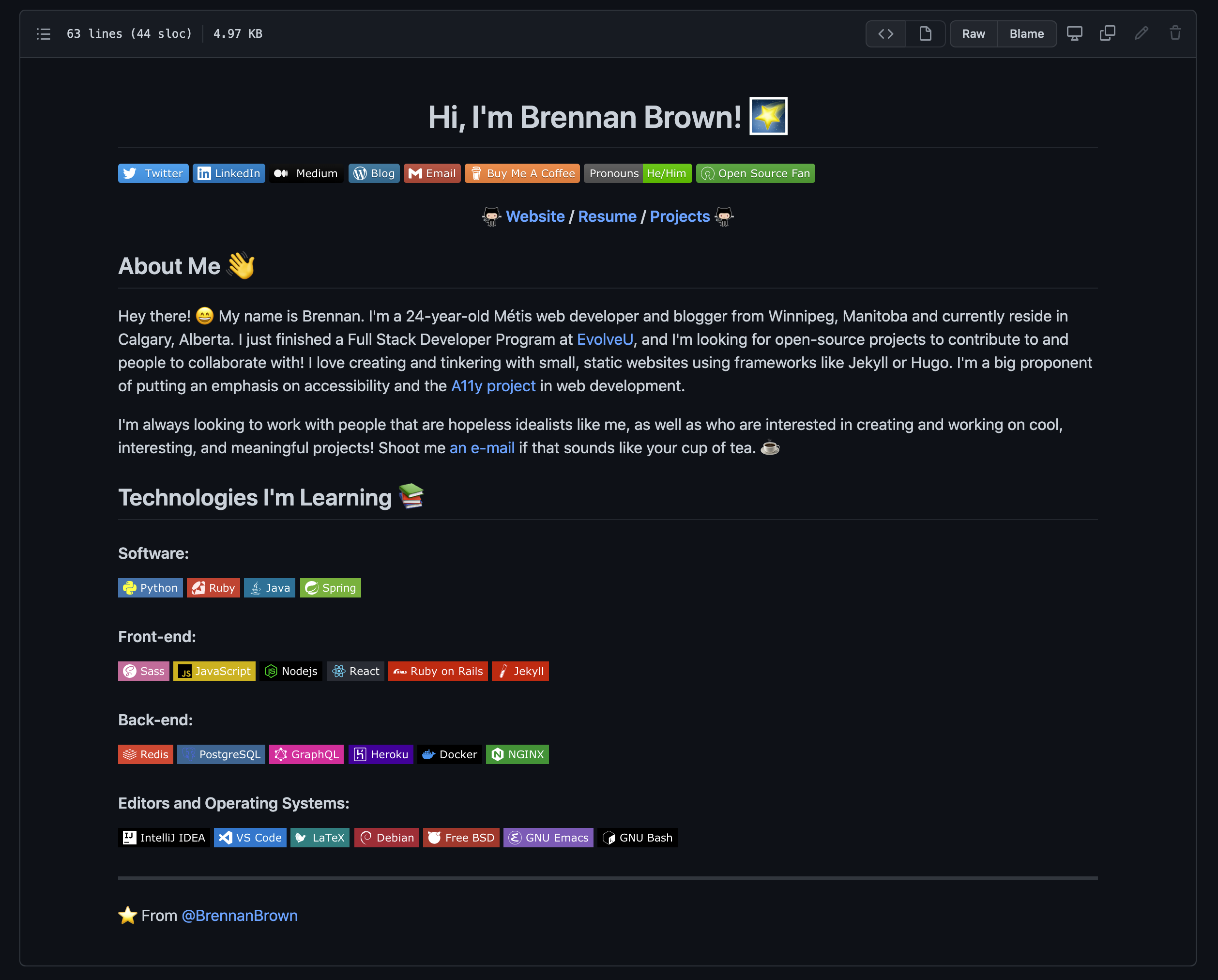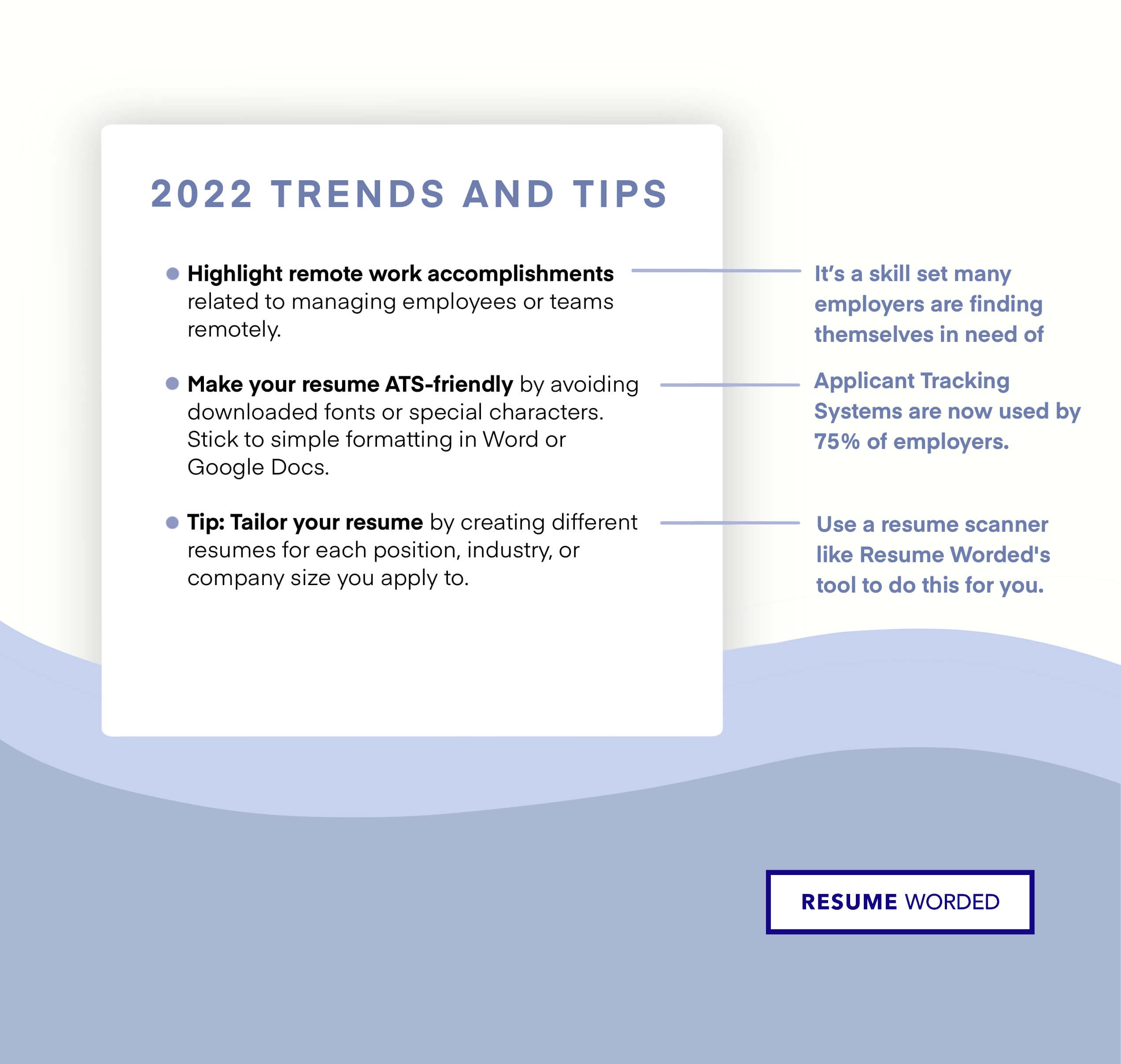Software engineering is one of the fastest growing career industries in the job market today. There are hundreds of hungry developers in the job market looking to snatch up high-paying, rewarding jobs. And a ton more resumes that hiring managers need to go through.
An increasingly common element in software engineering resumes is a GitHub profile. To learn more about whether to include one on your resume — and how — we've compiled some of the best tips from industry experts.
What is GitHub?
GitHub is an open source community serving as an online portfolio that helps developers manage, track, and make changes to their code.
Since it's an online public portfolio, it's usually a great place to showcase projects you've worked on, languages you know, and your commitment to software engineering. Similarly, for recruiters, GitHub is also a great place for them to get a sense of whether or not you have the right skills for the role.
Should you include your GitHub profile on your resume?
Short answer: It's optional.
It's not a requirement, and if you don't have a GitHub profile — or it's not very impressive — you don't need to include it. It's totally optional.
Here's a quick checklist to help you decide whether to include a GitHub profile:
- Do you have something you are proud to show off on your GitHub profile? Have you contributed to some popular open source projects, or using programming languages or skills that are specifically required for the job you're applying to?
- Is your GitHub profile active? Is it clear that you've been actively developing? Do not link to an empty/inactive GitHub profile. This does more harm than good since it shows you're not actually an active developer.
- Do your projects on your GitHub profile show your experience? If you're new to programming or you have poor code visible, you should leave it off.
If you answered yes to the questions above, you absolutely should include a link to your GitHub profile since it will strengthen your overall candidacy.
Including a strong GitHub profile lets hiring managers see your commitment to software development, explore your projects, and see interesting projects you've contributed to. This will help set you apart from other engineers who either have a poor GitHub profile.
How to link to your GitHub profile on your resume
Great — so you've decided that you want to list your GitHub profile onto your resume. Let's go through how to do that.
You have a few options:
- Link to your entire GitHub profile in your resume header
- Link to specific projects on GitHub in the projects section of your resume
- List GitHub skills in your skills section
- Mention your GitHub experience in your resume summary or cover letter
- (Additional) Link to your GitHub profile on LinkedIn
Let's go through each of them.
Link to your GitHub profile in your resume header
The easiest option is to link to your entire GitHub profile. This is an excellent option to use, particularly if:
- You have a lot of active projects on your GitHub profile
- You want to show hiring managers your contributions to open-source projects
- You're not using a Projects section, and you don't want to highlight a specific GitHub project
- You want to show hiring managers your breadth of experience, particularly across many programming languages and projects
How To:
For this option, add a link to your GitHub profile at the very top of your resume where it can easily be seen by recruiters and employers. This section, the header, is typically reserved for portfolios, LinkedIn profiles, and professional websites - making it the perfect real estate for displaying your coding talent and GitHub profile.
Example:
Link to specific projects on GitHub in your resume
If you have a particularly impressive project that's on GitHub, you should create a dedicated projects section on your resume and link to it directly when describing the project. This is a great way to highlight a specific project you developed, plus gives recruiters a quick overview of what they should expect (in terms of programming languages, and description) when they click into your GitHub profile.

If you go for this option, make sure the project you're linking to is:
- Public — make sure hiring managers can access and see your code and activity!
- Not confidential — on the flip side, don't make any projects public that are confidential or you don't have permission for. This could be work projects you've worked on.
How To:
List the name of the project, your specific role, and the date of completion. Underneath, include a link directly to that project and list 2-3 of your key accomplishments.
Example:
Or alternatively, here's a text version if you'd like a template to copy into your own resume:
Developer (Your role in the project) - Jan 2021
Resume Worded (Employer Name)
Github Link: https://github.com/resumeworded
- Technologies used: Python, React.js, Redux, Node.js, PostgreSQL
- Designed and implemented movie recommendation engine ....
- Bullet point...
Include GitHub in your skills section
If you're applying for a position that involves coding or programming, you should explicitly list those skills on your skills section — this will help you get past Applicant Tracking Systems. If you haven't included a separate projects section, you can include links here to specific projects on GitHub.
How To:
Include a subheading like "Technical Skills" or "Programming Languages." List your core competencies and include a link to a specific GitHub project that best demonstrates these skills.
Example:

Mention GitHub in your resume summary or cover letter
If you want to spotlight your GitHub expertise front and center, you can mention it in your resume summary. This is only necessary if the job description specifically mentions GitHub, otherwise it may be overkill.
How To:
Underneath your contact information but above your work experience, write a brief (3-5 line) resume summary outlining your background, career highlights, and 2-3 key skills.
Example:

How to link to your GitHub profile on LinkedIn
Whether or not you're actively job searching, keeping your LinkedIn updated is an excellent way to showcase your professional skills and allow interested recruiters to connect with you.
How To:
- Go to the LinkedIn homepage
- Click on 'Me' and select 'View Profile'
- Select 'Contact Info' and click on the Edit button
- Choose 'Add website'
- Type or paste the link to your GitHub profile
- Choose 'Other' in the drop-down menu
- Enter a website title ("GitHub' is fine)
- Click 'Save'
Example:

Steps to ensure your GitHub profile is in order
Before you link your GitHub and send it out to recruiters, make sure you’re putting your best foot forward on your profile. Let's go through a few ways you can do that.
Clean up your GitHub before for prospective employers
So, how do you know when your GitHub is ready to be included in your resume? Ask yourself the following questions:
- How is my code quality? Is the naming appropriate, is the code easy to read? Does it follow best practices?
- Does the project have unit or integration tests? If so, is the recruiter or hiring manager aware of this?
- What larger open source projects have you contributed to? Are my pull requests easy to find?
- Do I have a repository with a large number of stars and lots of repositories? How do I respond to issues in pull requests? Are my collaboration skills being well displayed?
Remember, things like followers, number of repositories, and other statistics that have little to do with code quality are not as important to feature on your GitHub profile.
Optimize your resume with Score My Resume
While your GitHub profile is important, your experiences, skills and keywords — and how you present them — are way more important at getting you an interview.
When you describe your resume's bullet points and projects, are they effective at conveying what you accomplished? Are you sure you've covered all red flags a recruiter might have?
An easy way to make sure your resume is effective is to upload it to the tool below — the platform scans your resume for common issues like impact or style, and instantly gives you suggestions on how to improve it.
Create a README for your profile, and your projects
For your overall GitHub profile, create a README which summarizes all that a hiring manager should know about you, and directing them to your best work.
To create a README, create a repo with the same name as your username, and simply initialize with a README - this will also be useful for including relevant videos or screenshots. Here's an example of simple README that tells hiring managers about your core skill sets, programming languages and projects:

For your most important projects, you should also make sure you include a README too — this shows hiring managers your ability to document and maintain code, a skill that they expect software engineers to have.
Proper READMEs on your main projects will provide valuable context for what your project does, which code is the most relevant, and how to run and test the code. If it’s a web application project, add a link. Sometimes, a clear description of what your code aims to achieve is more important than the code itself. Need examples? Grab some inspiration for other developer READMEs in creating yours from lists like this and this.
Pin and feature your most important projects on GitHub
Make sure your pinned and featured projects are a reflection of your best work, and pick and choose which projects to feature based upon what’s relevant to the job you’re applying for.
Pin up to six of your best repositories on your profile, as these are likely the only projects recruiters will look at. Add a clear, concise description of each project as well.
If you have some projects on your GitHub profile that are old or don't have activity, you don't need to worry about them being on your profile as long as you make sure not to pin them.
But before you start firing applications out to employers, follow these guidelines to make sure your resume is an optimal length.
Resume example for a software engineer
If you'd like some context of how your resume might look like, here's a sample resume from a software engineer. This person could link to their GitHub profile in the header. You can download this template for free, along with several ATS-ready resume templates.










